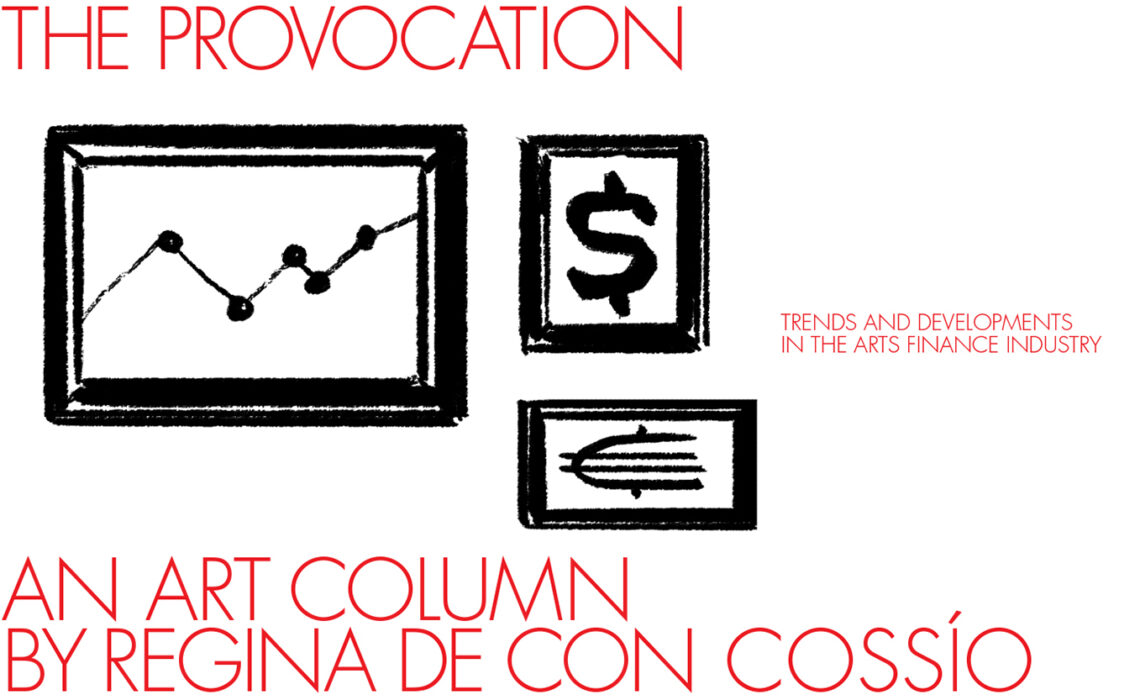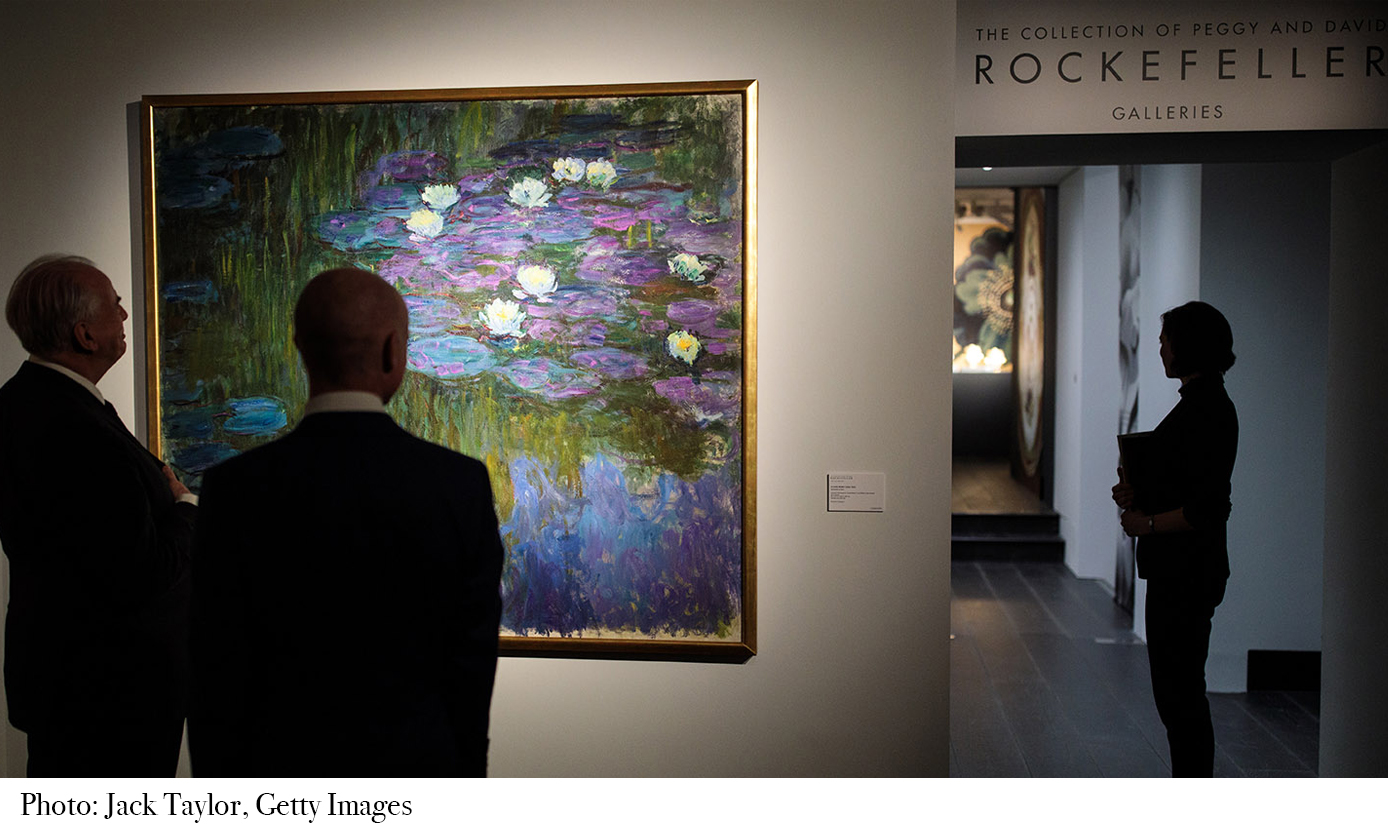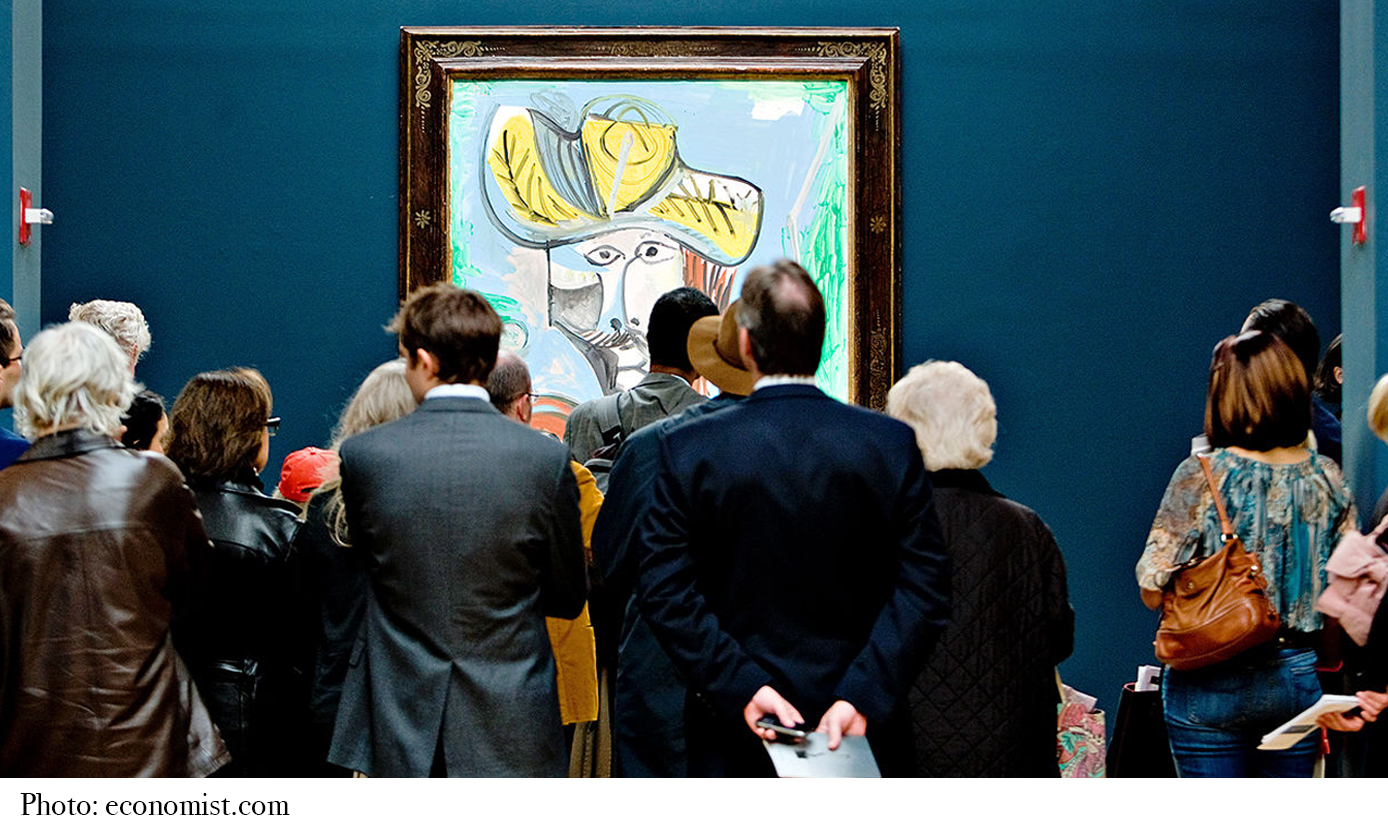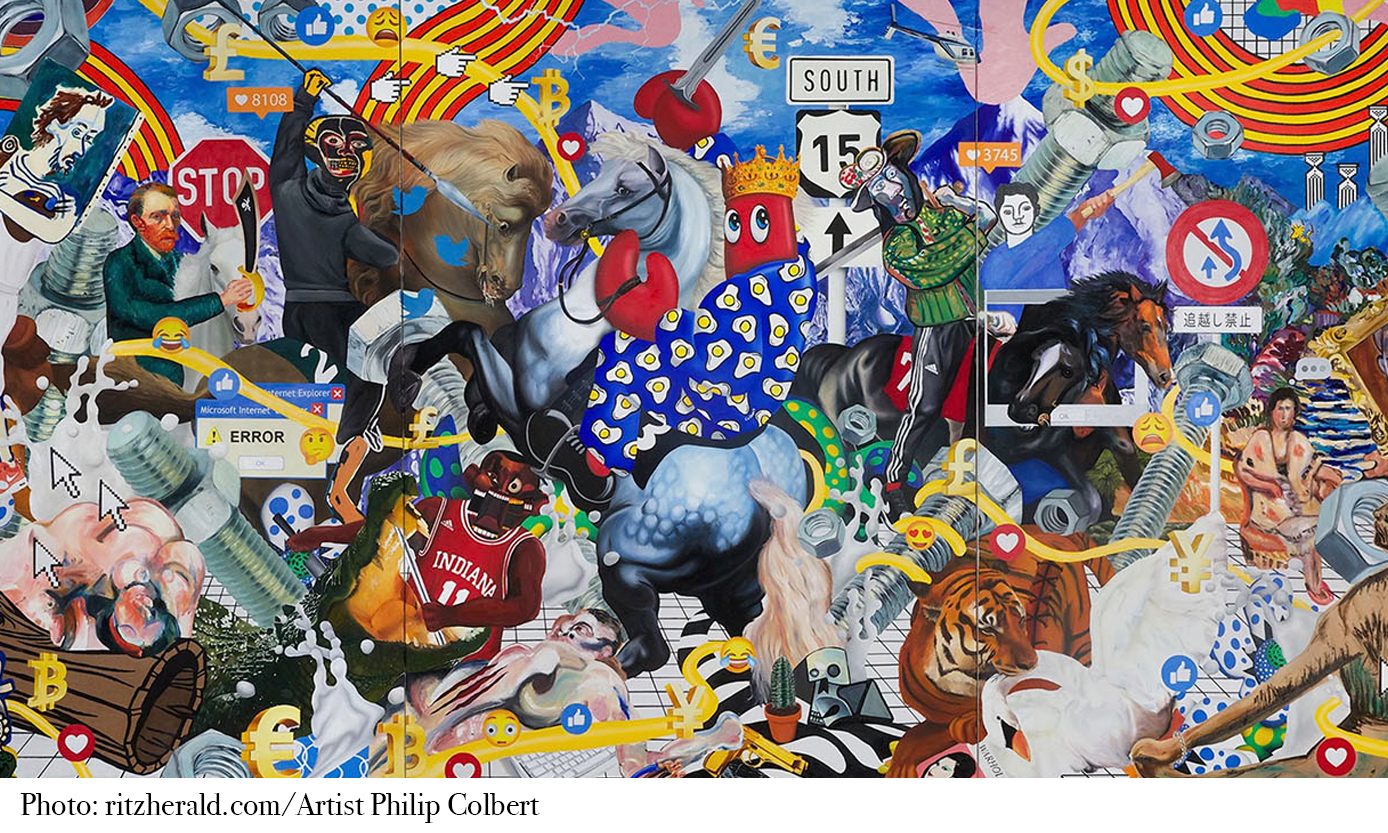
Trends and Developments in the Art Finance Industry
By Regina de Con Cossío
Art and finance are tied together closer now than ever before. An increasing number of collectors understand the value of art as more than an attractive asset; the investment value of art collection has become an activity worth investigating further as confidence in the art market grows rapidly, along with sales.
Of the aspects of art and finance which are growing consistently, these are some of the most widespread trends which are likely to develop and expand in the future:

Wealth management is not new; investors are looking for advice and guidance to manage and increase their wealth through a variety of outlets. It’s not just estate planning, either; as art becomes a more attractive investment in all stages of an investor’s life, financial advisors are adding this to their menu of services. The 2017 Deloitte Art & Finance Report indicated that 64% of wealth advisors offer services related to art and other collectibles. The process of building wealth is complicated, and specialized advisors offer investors the education to expand their portfolios to include art. Like the issues we saw with the fall of the American mortgage industry, investors must use caution and take sage financial advice.

Historically, very few people knew what works of art REALLY cost; many pieces were sold by private sales between individuals and through galleries, where sales prices were kept under wraps. Only those “experts” in the industry and people within the small fine art circle had any idea of the money that changed hands. Although this practice still happens, the development of online art sales and sales at art fairs have opened the flow of data within this relatively-closed market. There is a shift in some locations from the tight-lipped culture of the past to a more flaunty, in-your-face approach in some public at events. For some, this may equate to more data available, but there continues to be the skepticism of whether the data is trustworthy and the concerns of price manipulation. The bottom line is that as more data becomes available, is usefulness will increase.

The 2018 annual TEFAF report revealed that the worldwide market for at financing was nearly $20 billion in 2017, and the largest share was consumed by private collectors. Wealthy collectors are progressively looking to use their art assets in financing as well as looking for private loans, both moves which are only accessible to the wealthiest collectors. Dealers are less likely to acquire financing due to the strict requirements necessary and lack of lenders willing to participate a relatively risky and opaque market. Additionally, the financial security found in the American banking system keeps a majority of art financing within the U.S.

Blockchain, the permanent chain of data, offers a method to increase authenticity and provenance, but has not been adopted quickly, much due to the lack of centralization, both in blockchain use and the art market in general. The art world struggles with efficient data sharing and validity, and with so many individual players in the world of art, not everyone will adopt the technology in similar methods and levels. Blockchain could be a game-changer for art collection once it becomes manageable, while quantitative analysis provides firm data to support the market. It is simply a matter of how quickly it can and will be adopted by market leaders before it trickles down to collectors.

The Art market has truly exploded, and like other investments, it could be unsustainable. What does that mean for collectors and risk? Gallerists are hungry for success, both financially and in their reputation development, and buyers must take this into consideration when making purchases. However, an international market of buyers keeps the market active, and allows art to be shared everywhere in the world. Galleries must rise to the occasion and be prepared to accept new collectors and financing options. Online sales and auctions support art markets internationally, which helps to ensure that art sales continue to grow even when an individual nation’s economy struggles through financial crisis. Lending is found across all borders, and competition between banks and other financial companies will help lending seekers more accessibility in financing options.
Sybaris Collection
We at Sybaris Collection understand the importance of understanding the art market, from discovering outstanding works of art, visiting fairs and locations where art is found, and sharing with our members our extensive knowledge about the elements of the art world, from appraisals to financing, genres and mediums, and offer our expertise to our worldwide clientele.


